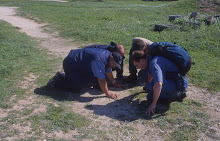Philippe Daverio, the art.., says that the traditional classification into periods dates to XIX century, when modern art was Raphael and contemporary art was Hayek, and that it has do be deeply rethinked. To my knowledge, he has not put down explicitly a new periodization, but, from sparse hints, it seems to be 1300-1700 (From van Eyck and Giotto to Poussin), 1800-about 1920 (from Ingres and David to Picasso, Kandinskij and the other historical vanguards), and 1920-today (from Duchamp onwards). If I don’t mistake the ideas of Daverio, it seems very sensible. The art of XX century, in fact, is very different before and after World War II, and Picasso and Hirst have probably very little in common.
This periodization of the history of art suggests a parallel segmentation of the history of Man. The end of the Midle Age is traditionally dated at the end of XV century, after the discovery of Americas by Columbus France Italy Italy and in part in the Flandres, and then spreads slowly to Europe , attaining a turning point with the rise of national states and the beginning of colonialism. And it ends in the XX century, with the rise of mass society – this is the surprising idea of Daverio. This pre-dated passage from modernity to post-modernity is related to the astounding rush of technological innovations, the expansion of the middle classes, World War I, the end of colonialism, and Russian Revolution.

Nessun commento:
Posta un commento